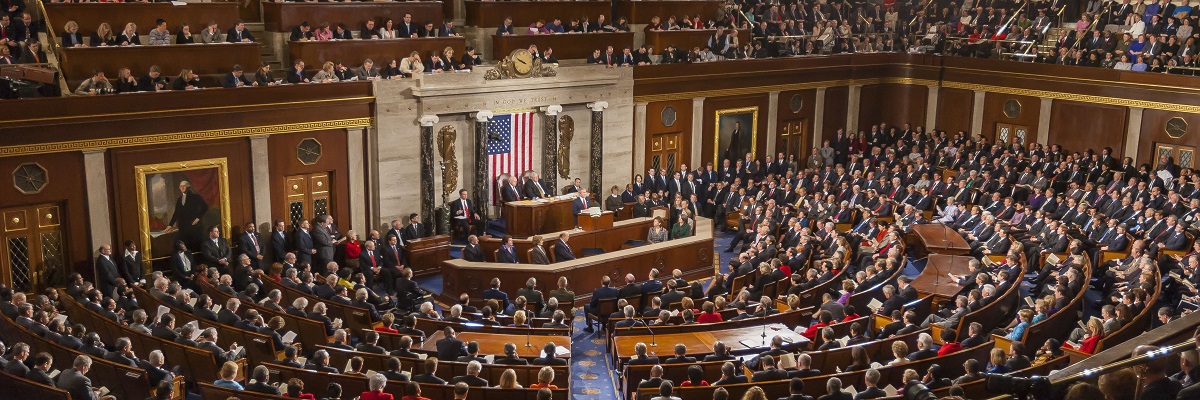Defense & Security
The US Administration managed to avoid a shutdown several hours before the deadline, however the problem is not solved yet.

Image Source : Shutterstock
Subscribe to our weekly newsletters for free
If you want to subscribe to World & New World Newsletter, please enter
your e-mail
Defense & Security

Image Source : Shutterstock
First Published in: Oct.02,2023
Oct.27, 2023
In the United States, there is a complex process of annual budget adoption for the next fiscal year, which begins on October 1. Budget adoption proceeds according to a certain schedule. Ultimately, by September 30, The House of Representatives and the Senate must introduce 12 appropriations bills of the main government activities for the next fiscal year, and then the president must sign them. In case if all 12 appropriation bills are not passed, an almost complete suspension of the government institutions activities occurs (shutdown). In case if a part of the bills is passed, only those federal agencies that did not receive appropriations will be shut down. Shutdown means that government employees have to take forced leave without pay. Only those institutions that are of critical importance to national security continue to operate. For instance, employees who are responsible for the safety of the US’s nuclear arsenals and monitoring of hydroelectric power plants and energy lines continue to work in the Department of Energy. Also, active military personnel continue to perform their duties. Institutions with special self-financing funds (such as post office, customs) continue to operate in a certain mode. In addition to adoption of annual discretionary spending, the US also has mandatory spending for basic social and several critically needed areas of government activity. This financing is carried out from special off-budget funds and does not depend on annual approval by US Congress, in this way society is protected from the consequences of political struggle to some extent. Social security and healthcare programs, such as Social Security, Medicare and Medicaid, also continue to operate. The US Congress widely uses a tool called a continuing resolutions (CR) for a certain period in the amount that was included in the previous budget to avoid a shutdown. These resolutions become laws after they are signed by the President. Since this kind of resolutions extend appropriations from the previous fiscal year, it interferes with the activities of federal agencies because they have to freeze their spending levels, it also makes it difficult to plan future projects and creates risks for government contractors. A few comments on the history of the issue. Last time when Congress completed the budget approval process on time, before the start of the fiscal year, was in 1997. Since in 1976 Congress transitioned to the modern budget process, based on the 1974 Budget Act, there have been 20 "funding gaps," including cases when funding was not allocated even for a single day. The longest government shutdown in U.S. history lasted 35 days, from December 22, 2018, to January 25, 2019, during the Trump administration. On March 9, 2023, President Joe Biden submitted to Congress the budget proposal for fiscal year 2024, estimating expenses at $6,883 billion (25.3% of GDP) and a budget deficit at $1,846 billion (6.8% of GDP). This year, the budget process became more complicated because in June 2023, lawmakers passed the Fiscal Responsibility Act of 2023 (FRA) to avoid a technical default on the national debt. This law, by suspending the "debt ceiling," established caps on discretionary spending for fiscal years 2024 and 2025. When appropriations for fiscal year 2024 were being discussed in Congress, the provisions of the FRA sparked debates about spending levels. The White House requested an additional $20.6 billion for emergency aid to Ukraine and $12 billion for domestic disaster relief. In August 2023 Joe Biden's administration submitted to Congress a request for additional funding of $40 billion, which included $24 billion for military and humanitarian assistance to Ukraine and other international needs, and $12 billion for domestic disaster relief. The right-wing Republicans in the House of Representatives sought to secure budgetary powers for the administration well below FRA-agreed levels and to include new provisions on border security. The debates continued until Saturday, September 30, when the House of Representatives approved a temporary resolution (335 votes in favor, 91 against, including one Democrat), extending government funding until November 17. The resolution includes disaster relief (a concession to the Democrats) but does not include additional funding for Ukraine (a concession to the Conservatives). The Senate approved the bill on Saturday evening (88 in favor, 9 against). The bill passed through both chambers in just 12 hours, setting a speed record. Joe Biden signed it before midnight, preventing a government shutdown. "It's a total rollercoaster," - Guy Reschenthaler, the Deputy Chairman of the Republican Party in the House of Representatives, commented on the day's events. In the next month and a half, we can expect a new round of struggle over budget expenses. In particular, Senate leadership from both parties issued a joint statement committing to vote for continued funding for assistance to Ukraine in the "coming weeks." On October 3, the House of Representatives for the first time in history voted to remove Republican Kevin McCarthy from his position (initiated by the far-right Republican Matt Gaetz from Florida); members of his own party voted for his removal, accusing McCarthy of seeking support of Democrats to prevent a shutdown. According to official prognosis, the budget deficit is expected to grow relative to GDP. The increasing deficit will significantly increase the federal debt (which has already exceeded $33 trillion) over the next decade, and interest costs to service it will correspondingly increase. Interest payments will jump from $665 billion in 2023 to $1.393 trillion in 2033. The Biden administration and Congress are caught between Scylla and Charybdis: they need to address the problem of a massive budget deficit and national debt while continuing to make budgetary injections to support the economy, socio-economic and defense priorities. All this intensifies the struggle over budget expenditures. The threats of government shutdowns have become a bargaining chip in disputes over budget policy. The decision-making process in the US budgetary sphere is becoming increasingly politicized, undermining trust in the government and does not contribute to solving the problems really facing the country.
First published in :

Unlock articles by signing up or logging in.
Become a member for unrestricted reading!